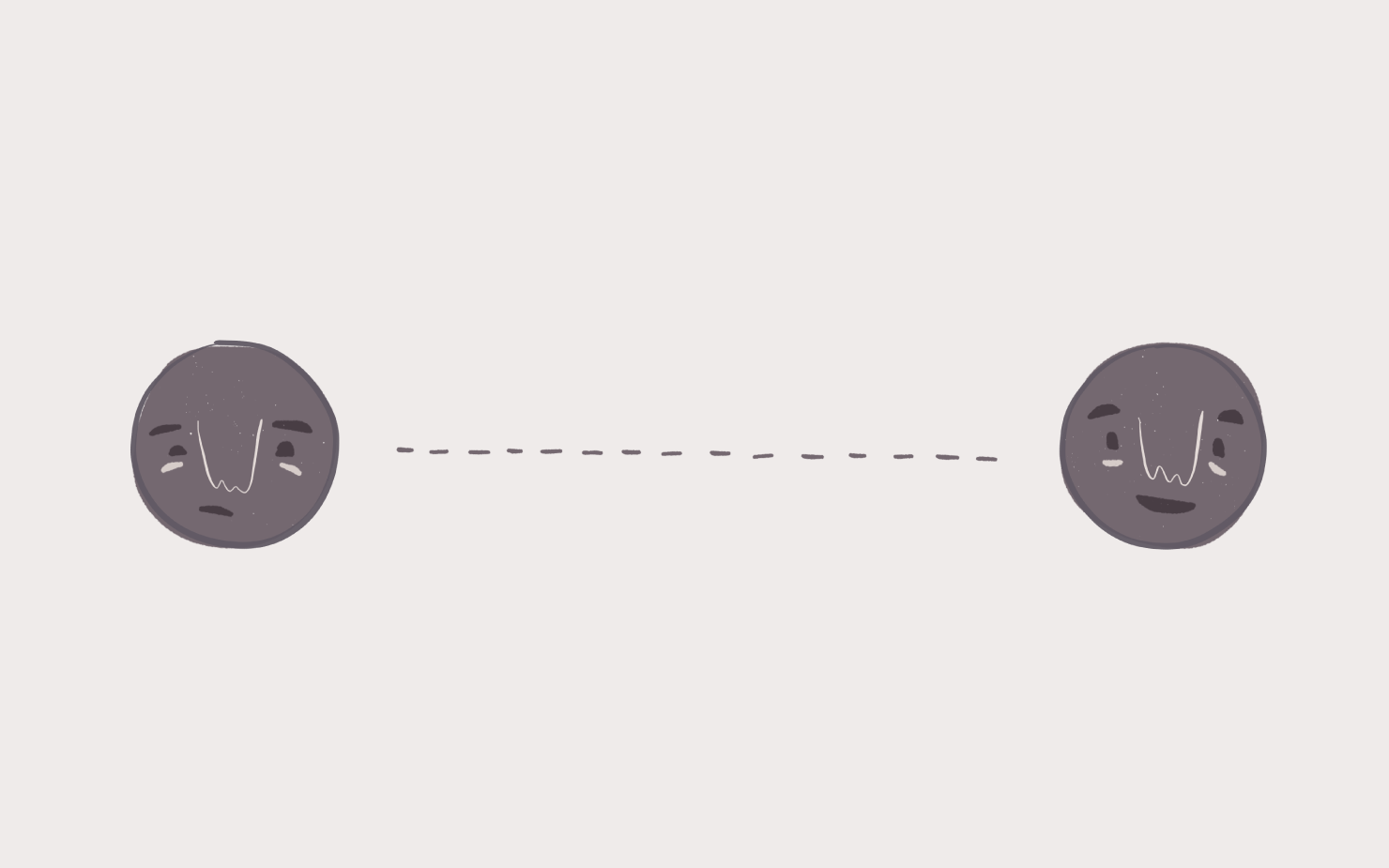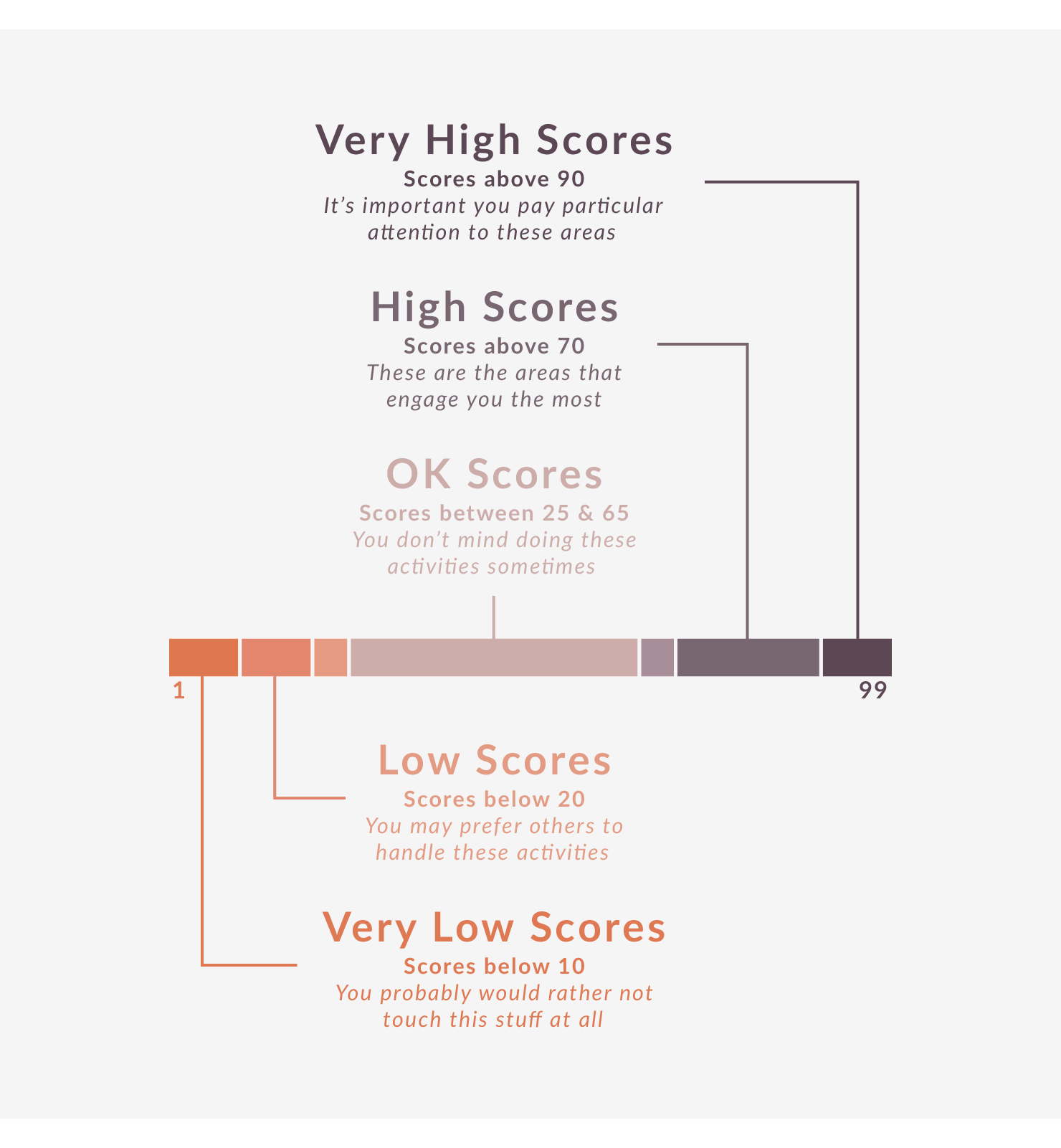
On the line: the Interests scale
If you’ve ever taken part in a workshop run by Elaura, you’re probably familiar with the activity we use to help people engage with their Interest scores.
Getting a team to physically position themselves on a line, based on their score for a particular interest, and then to look around, at how near or far they are from the people they work with on a daily basis, can be a pretty powerful illustration!
But thinking of the Interest scores in this way - as a position on a scale, and not just a number - also helps with decoding what these scores are actually telling us about ourselves.
Before we get into the scale, I just want to remind you: Interests are not a measure of skill. A high score does not equate to skill. And a low score does not equate to a lack of skill. They are simply a measure of how drawn, energised, or motivated you are by each area.
A scale of 1 to 99
Each of your Interest scores are presented as a number between 1 and 99, 1 being a really low score and 99 a really high score.
We generally talk about high scores being any scores you have of 70 or higher.
If you’re someone with no scores of 70+, don’t worry about it - just focus on your top two to three scores. Chances are you have pretty broad interests and no very strong preferences for any particular sphere of activity (illustrated by having a lot of Interests in the 50s and 60s).
Really high scores are those of 90 or higher. Not everyone has scores in the 90s, but if you do, please pay attention to them. These are the things that will help you feel energised and right with the world - if you’re not engaging with them you may be experiencing a deficit, or feeling at a loose end, without realising why.
Low scores are those of 20 and below.
This is the point at which we start to doubt whether you’ll be able to find any real enjoyment in an area. It may be something important, and you engage with it for that reason, but it’s probably an area that you find quite draining, energy-wise.
With scores of 10 and below we can basically say that you would really rather not have to deal with this area at all!
The mid-range between these high and low scores, 25-65, can be termed the ‘OK’ range.
You may well enjoy engaging with the stuff that falls within this range, but if you were having to deal with it every day, that enjoyment might soon wear off. And it would wear off much faster with a score of 25 than with a score of 65!

(Those of you with high numerical scores will no doubt have noted that 21-24 and 66-69 are not accounted for within these ranges - you can consider these the buffer zones. You’ll be the best judge of whether a score of 23 is, for you, an OK or a low score!)
Now it’s your turn…
Have a look at your own 10 Interest scores, in the context of the diagram above. Where do most of your Interest scores fall? Do you have a lot of OK Scores? Or do they fall largely at the extremes of High and Low?
You might want to list the applicable range next to each Interest - either on your summary report or a loose piece of paper. For example: Mechanical VERY HIGH, Persuasive HIGH, Musical HIGH, Clerical OK… etc. etc. and reflect on this list regularly: how much time am I spending on my VERY HIGH Interests? How much on my LOW Interests? what impact is this having on my motivation and well-being? and so on.
Finally, use your knowledge of these high and low scores to be intentional in the way you approach your leisure time - what activities are going to give you the best mental / emotional / physical boost, and leave you feeling refreshed and energised?
Once you understand what these scores are revealing to you about yourself, you have every opportunity to make that knowledge work for you - both at work and in your home life!
